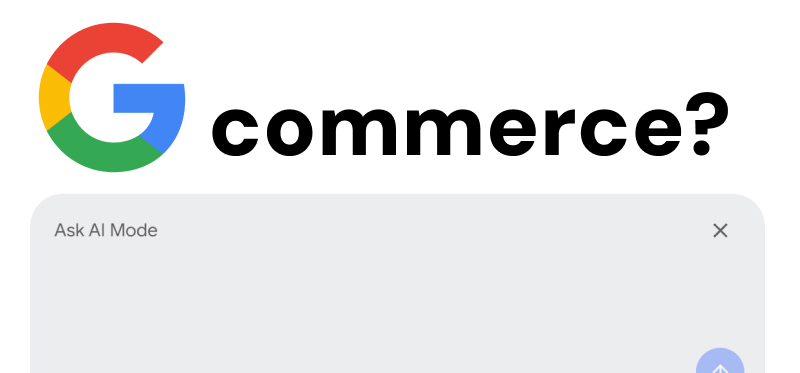I’ve been waiting…
For years I’ve been expecting Google to make a stronger play in everyone’s ecommerce tech stack.
But I didn’t quite figure they’d end up making it obsolete.
Shopping bots have been teased for a while, but LLM adoption was a rounding error on the search and browse journey. Maybe in future, but not yet. Right?
Maybe not
Google’s all in on AI Mode for search and shopping, makes all that suddenly moot. As a shopping experience that sits (almost) entirely off your site, is about to become mainstream accessible for everyone.
No wonder Sam Altman & Jonny Ive have been cuddling up in those creepy father son photos all week talking about hardware. Quick…Deflect, Distract!
So where could it lead?
Taken to its full conclusion, this AI shopping move puts so many elephants in the room, it’s hard to find somewhere to sit.
Between disruption to things like traffic, SEO, payment providers, slews of website tools, ecom platforms and analytics,
…plus the contemplation of what it will mean to trade a site, brand, store front or marketplace, when the only people showing up are AI agents popping in to complete transactions like deliveroo drivers picking up at Burger King…
…there’s quite a lot to unpack!
This is clearly how we all end up shopping from Buy n Large! (little WALL-E reference for you there)
But don’t panic. Prep!
I don’t think the sky’s about to fall in just yet, and that’s because I don’t think google wants to make retail sites irrelevant.
As a business funded by selling you clicks, it can’t burn the boats just to fence off competition from ChatGPT in the name of progress…
…and I don’t think trading in CPC’s for CPM’s, Google Pay transaction fees and becoming the world’s largest affiliate is exciting anyone down at the plex.
But something in between is definitely going to happen and disrupt a lot of what we took for granted, and probably in a less time than we thought we had to work it out.
Data will be > Experience
What is clear to me though is this. Just like google Shopping now, this whole enterprise (the Shopping Graph as they call it), relies heavily on the quality of the product data you give to Google et al through your IA, your PDP content, and your product feeds.
And I think we all know what a ropey, patchy, thin, steaming pile of a bare MVP that is.
…and yes I’m looking at you [every other retailer I’ve worked with or spoken to since 2009 when product feed became a thing].
Data quality will underpin your traffic & conversion
If 50% of your traffic is coming though shopping and landing on a PDP, that means that 50% of traffic, is going to depend almost entirely on what you can supply to Google, and for 2 reasons.
1) To match up with that fanned out query they keep talking about, along with the rich spread of customer language and intent that comes out of chatting with an LLM assistant…
2) To ensure you have provided enough data to close the sale without them coming to your site and relying on them getting all inspired, cross-sold, up-sold, and cookie dropped in your CDP for retargeting that lovely 360 customer view everyone’s been trying to build up for the last decade.
Overall take
So bottom line…we don’t know exactly how, how much or how fast this will go. But it will go.
So if you want to future proof your business for offsite success in the world of AI assisted shopping, your product data strategy needs to become a strategic priority.
That means proper descriptions. No fluff and boiler plate, and no more info gaps, empty feed columns, or weird data bots n bobs all over the show. Its got to be beautiful. Clean. Rich, Consistent…and Structured.
- You’re going to need rich and deep attributes that match customer language.
- Left and right brain tagging.
- Youre going to need to go beyond the basics and the specs.
- Think missions, lifestyles, vibes, use cases and aspirations.
Match how your customers relate to your products, not your catalogue.
The good news, is that if you do this now, your onsite experience will also tune itself to customer intent, helping more customers find and buy on your site right now aswell as in the future too, whatever form that takes.
Your AI Strategy?
So if someone nonchalantly asks you about ‘what’s your AI strategy’. That’s it right there.
- You’re ‘AI readying’ your product data using customer intent and language,
- Why? To ensure your products can be more easily found & bought…
- …in a world of higher onsite expectations, and offsite agent assisted shopping.
(ok, I might have to tighten that one up a bit, but you get the idea. Let me know if you’ve got a punchier one!)
Want to talk about how to turn your product data into a future proof business driving asset?



